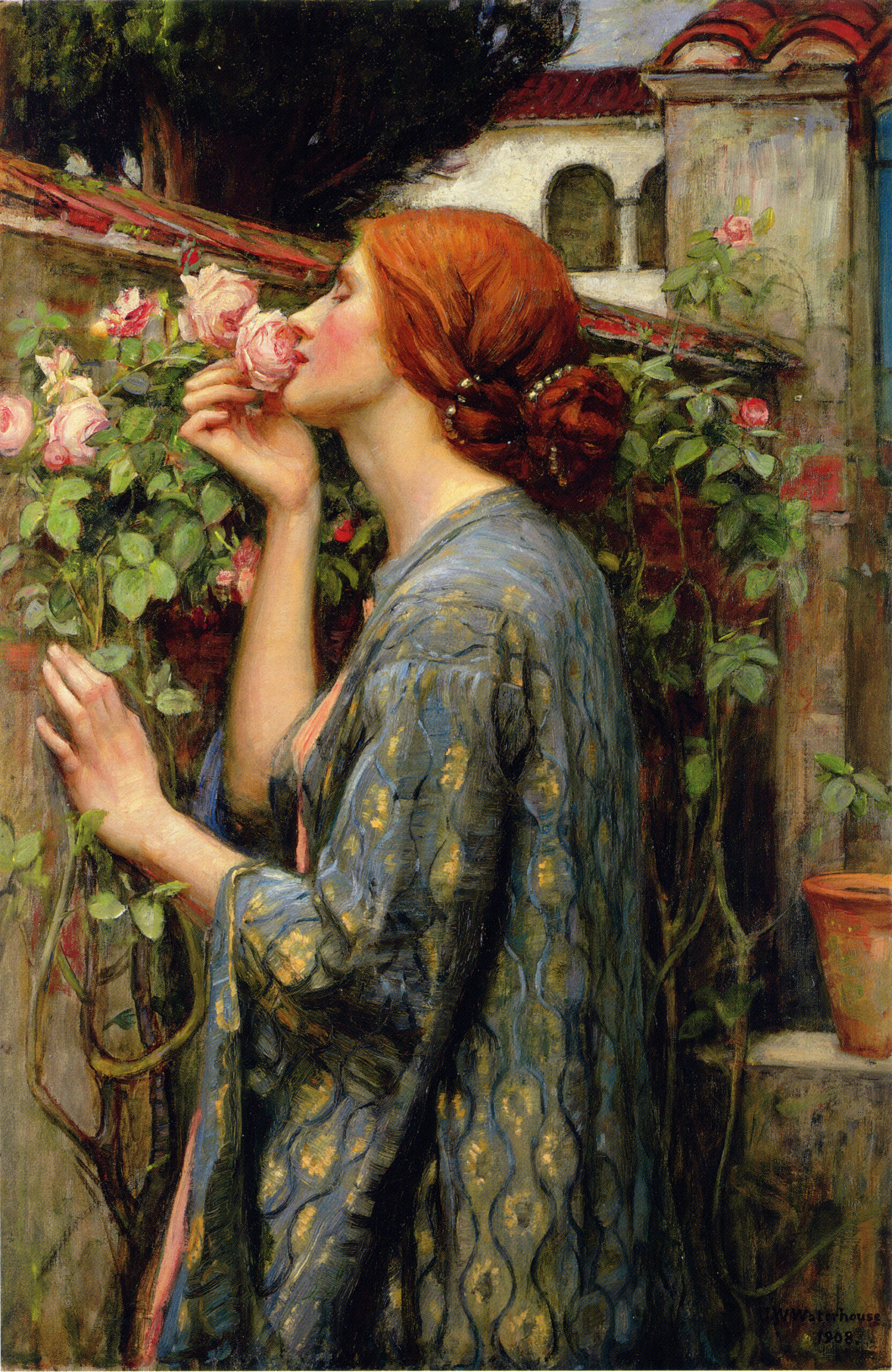
John William Waterhouse was a painter who was closely associated with the Pre-Raphaelite movement in art. The Pre-Raphaelites were a group of artists who sought to revive the art of the medieval and early Renaissance periods, rejecting the conventions of academic painting that dominated the 19th century. Waterhouse’s painting, “The Soul of the Rose,” is a beautiful example of the Pre-Raphaelite style, featuring a young woman holding a single red rose. In this article, we will explore the aesthetics of this painting, examining its use of color, composition, and symbolism.
One of the defining features of the Pre-Raphaelite style was its use of vivid, intense colours. Waterhouse’s “The Soul of the Rose” is no exception. The painting features a rich array of colours, from the deep greens and blues of the background to the bright white of the woman’s gown and the deep red of the rose she holds.
The use of colour in this painting is particularly striking in the way it creates a sense of depth and atmosphere. The background is rendered in a range of muted tones that suggest a garden or outdoor setting, with hints of foliage and sky visible in the distance. The woman’s gown allows a striking contrast with the background and draws the viewer’s eye to her figure.
The red rose that the woman holds is also a key element in the painting’s use of colour. The rose is depicted in a deep, rich shade of red that seems to glow against the woman’s. This contrast creates a sense of drama and intensity, as if the rose is the focal point of the painting’s emotional energy.
Waterhouse’s use of composition in “The Soul of the Rose” is also notable for its beauty and complexity. The painting features a young woman in profile, with her hair cascading down her back and her figure taking up most of the canvas. The woman’s pose is graceful and serene, with her gaze fixed on the rose in her hand.
The composition of the painting is balanced and harmonious, with the woman’s figure placed slightly off-centre to create a sense of movement and energy. The curves of her body and the folds of her gown are carefully rendered, creating a sense of texture and depth.
The background of the painting is also carefully composed, with hints of foliage and sky visible in the distance. This creates a sense of atmosphere and depth, as if the woman is standing in a garden or outdoor setting.
In addition to its use of colour and composition, “The Soul of the Rose” is rich in symbolism. The painting’s title itself suggests a deeper meaning, as if the rose is not just a simple flower but a symbol of something more profound.
One possible interpretation of the painting is that the woman represents the soul, while the rose represents the beauty and fragility of life. The woman’s pose and expression suggest a sense of reverence or awe, as if she is contemplating the rose with great reverence.
Another possible interpretation of the painting is that the rose represents the passion and intensity of love. The deep red of the rose suggests a sense of emotional intensity, while the woman’s serene expression suggests a sense of calm and contemplation. This contrast creates a sense of tension and drama, as if the painting is exploring the complexities of human emotion.
In conclusion, John William Waterhouse’s painting “The Soul of the Rose” is a beautiful example of the Pre-Raphaelite style, featuring a young woman holding a single red rose. The painting’s use of colour, composition, and symbolism create a sense of depth and beauty that is both striking and emotional. Whether interpreted as a symbol of the fragility of life or the intensity of human emotion, the painting captures a sense of wonder and awe that is characteristic of the Pre-Raphaelite movement.
Waterhouse’s use of vivid colours and careful composition create a sense of atmosphere and depth that draws the viewer into the painting’s world. The woman’s pose and expression, along with the symbolism of the rose, suggest a range of possible interpretations, each of which adds to the painting’s emotional complexity.
Overall, “The Soul of the Rose” is a stunning example of the Pre-Raphaelite aesthetic, offering a rich exploration of colour, composition, and symbolism. Its beauty and emotional intensity continue to captivate viewers to this day, making it a timeless masterpiece of art history.

